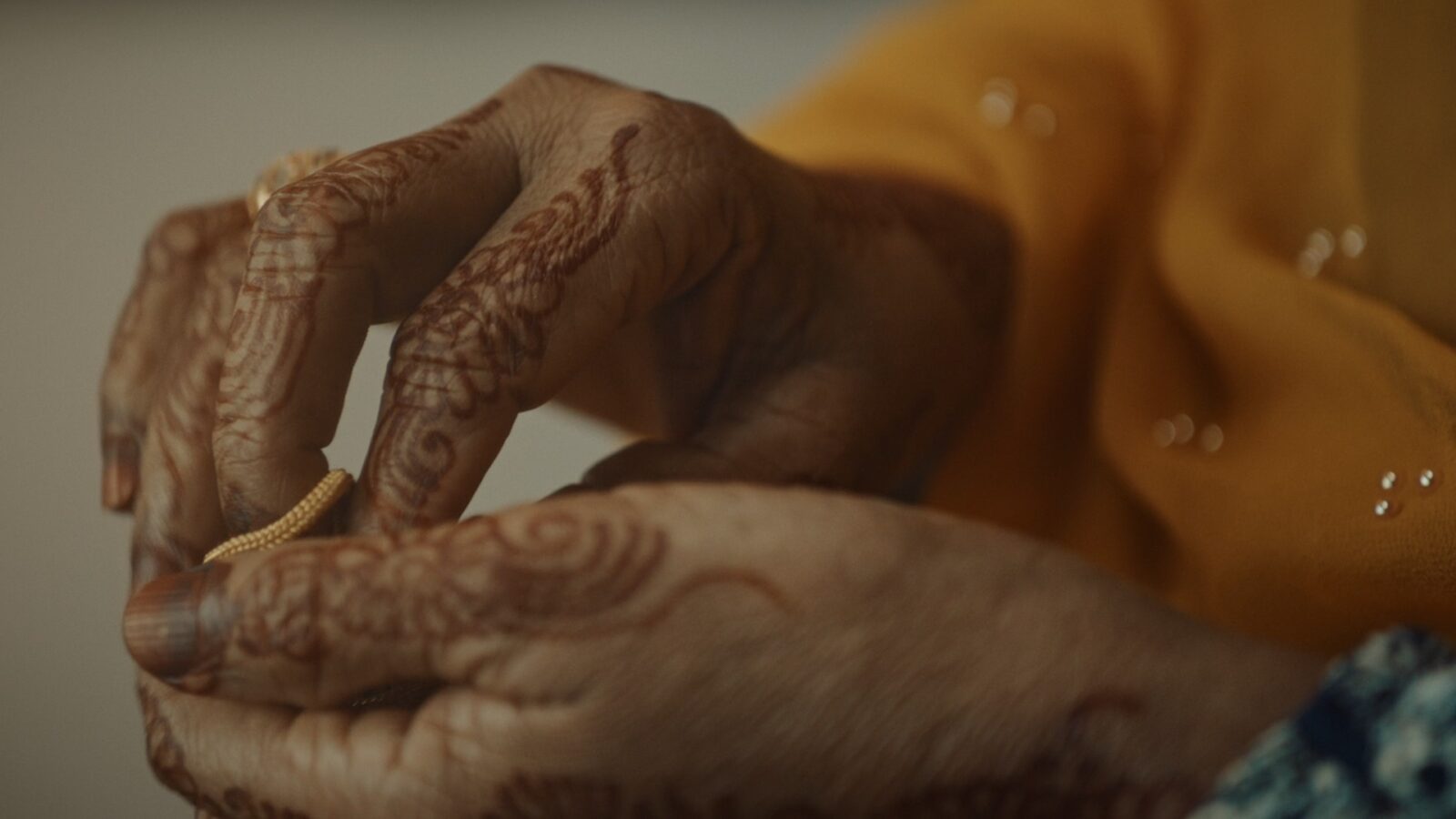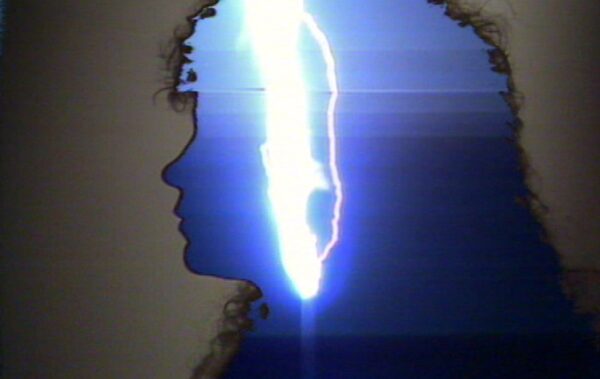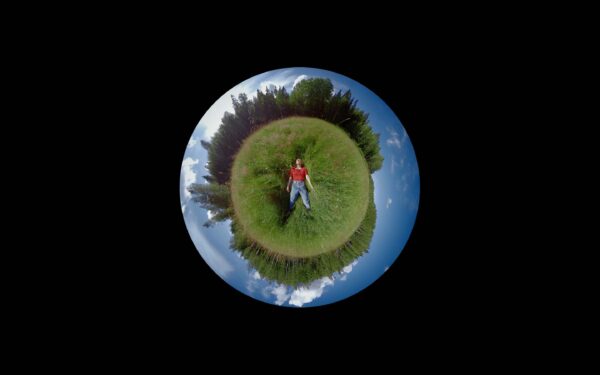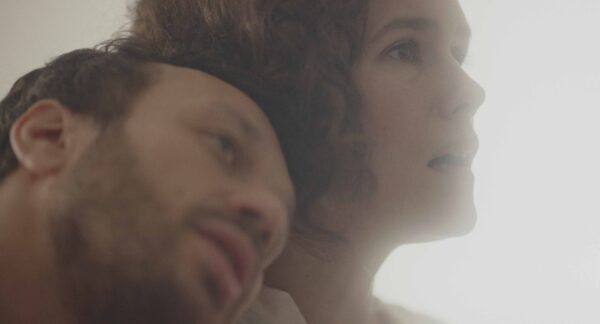The Spell of Disorientation
The Killing of Čáhcerávga
The Killing of Čáhcerávga is not one, but five films. Each a manifesto, these films—like chapters in a book—form a cross-section of questions and statements on indigeneity, otherness, and longing.

A forest in winter, a frozen river. The Killing of Čáhcerávga opens with a vast landscape, blue-grey with howling wind. A conversation takes place between a mother and her child in the form of a folkloric song. As the camera follows the child on solid ice, the story of Čáhcerávga, a child-eating creature, unfolds. Suddenly, the screen turns into a dark pool of water. The camera angles down at three people swimming and playing with a pink balloon in slow motion. As the film progresses, it becomes clear that The Killing of Čáhcerávga is not one, but five films. Each telling its own tale, these films—like chapters of a book—form a cross-section of questions and statements on indigeneity, otherness, and longing.
Lacking a time-based structure, the film relies on the viewer’s patience to connect the dots. The filmmaker, Miracle Workers Collective, conducts experiments in what they call “the potentiality in disciplinary disobedience”—a term that seems to mean everything and nothing. The film synopsis shows the collective’s intention of creating a “disjointed narrative,” employing “strange dialogue practices” and “unresolved scenic endings.” However, as a viewer, I feel the burden of interpreting every single image, at times excavating meanings at my own emotional expense.
Chapter two, for example, is veiled with opaque language. The scenes seem yanked out of an absurdist theater play. A disembodied, authoritative voice speaks from where the camera is: “Your work is your identity.” The actors look up straight into my eyes as if I were the source of their oppression. In this “capitalist balloon tank,” everyone is playing a game. However, the rules of the game are elusive and never fully explained. Confusion permeates: one minute the actors rebel against the voice; the next minute, they mock and hit each other, angry and cynical.
A monologue starts at the end of the game. “They insult you in their racist newspapers. They analyze your child’s dead body on television.” Who is “you” and who are “they”’? Who is the oppressed or the oppressor? I am an immigrant. I have experienced and contemplated discrimination, objectification, and the arbitrariness of nationality. It is difficult for me to perceive meaning when the righteous language and the confrontational camera angle condescend and manipulate my understanding.
I question whether it is worth enduring the distorted playfulness only to arrive at bewilderment. Thankfully, the next two chapters—using more open and concrete language, both visually and aurally—saved me from total frustration. Chapter three speaks about the oblivion of privilege with tongue-in-cheek humor. In a militaristic aqua fit class, the all-white subjects shout out—“I’m the boss here,” “‘I won’t ask permission,” “I’ll dictate the rules”—as the instructor encourages more forceful movements and attitudes. “Faster! Your mate is going under! But you are flying!”
I finally encounter a space where I am not pushed to believe or protest in chapter four. With the unrushed and quiet shots, my own thoughts can flow and my agency as a viewer returns. In this space, I recognize and empathize with the loss and longing for home. The slow-moving camera focuses on a woman’s hand caressing sand. The woman wears a translucent orange head-scarf studded with pearl-like beads and thoughtfully takes off her earrings and necklace. A voice hums in an unfamiliar language to my untrained ear. There is no subtitle. Melancholic, the untranslated song seems to appeal to a wound. It evokes feelings of missing and remembering without demanding an intellectual agreement. As the woman looks out of the window—where a river is frozen—it strikes me that the mythical place where Čáhcerávga dwells is a foreign land to this woman.
With this revelation, I expect the last chapter to bring me further clarity. However, it comes back to the same aesthetics as chapter two with slippery and heavy-handed metaphors. In a luscious greenhouse, multiple languages participate in a voiceover, inquiring about time, growth, and hope. “I, the miracle worker, the hope grower,” one of the voices says. I guess I am supposed to feel hope, but instead, I have become weary of the manufactured images masked with poetic language.
The Killing of Čáhcerávga is a collection of manifestos, whose unanchored sentiments leave me exhausted. I am unable to engage with the film’s didactic dimensions—be it the representation of the indigenous Sámi people, the criticism of the treatment of refugees, or the satirization of populist liberalism—without first recovering from the spell of disorientation it has cast onto me.




There are no comments yet, be the first!